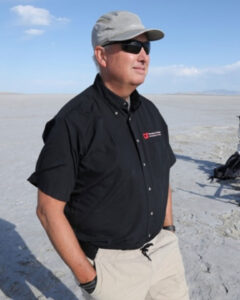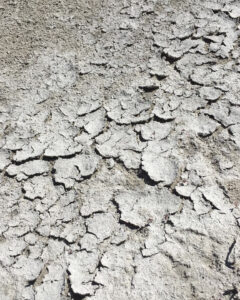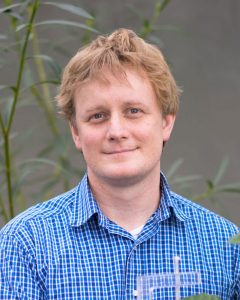
Smoke forecast, March 7, 1941.
Air you can chew: The history of Utah’s air quality
When Salt Lake City official George Snow said that the Wasatch Front’s air quality issues could not be solved “in a single day or year, not by a single group or group of persons . . . it will take a properly guided, united and continued effort to solve the problem”—it wasn’t in response to Utah’s torrential growth in recent years, nor was it during one of our recent inversions or smoke inundations from climate-driven Western wildfires. That quote is from 1917 and predates nearly everyone and everything that’s grown up in the Salt Lake Valley since then.
This quote shows that Utah’s air quality issues have been with us for a long time.
New research by Logan Mitchell, affiliated faculty in the U’s Department of Atmospheric Sciences, and Chris Zajchowski, who earned a Park, Recreation, and Tourism Ph.D. at the U in 2018 and is now at Old Dominion University, traces the history of air quality in Utah from the mid-19th century.
“It’s pretty clear that our air quality today is probably better than it has been at any time since about the 1880s,” Mitchell says. “We’ve been working on this for a long time, but we’re at a point in time when we really have an opportunity to make a big difference. And that’s really exciting.”
The research is published in the journal Sustainability.
The Wasatch Front shapes air quality—and vice versa
Yes, the Wasatch Front’s air today is sometimes gunky, gross and can be hazardous. But modern air problems pale in comparison to the noxiousness that poured out of smokestacks and chimneys a century ago when coal and wood burning was common and prevalent among homes and businesses.
Going back as far as the mid-1800s, early non-Indigenous explorers to the bowl-like valleys of the Wasatch Front noticed that wood smoke hung in the air, blue and hazy. Because the valleys of the Wasatch Front are shaped like mountain-ringed bowls, air pollution like smoke can settle in the valleys. In the winters, temperature inversions throw a cap of warm air on the cold valleys, trapping emissions and worsening air quality.
Early city planners understood the effect of the mountains on air pollution. If a smoky factory was built at the mouth of one of the Wasatch Mountain canyons, the canyon winds would blow the smoke through the valley. So, Mitchell found that in the 1890s factories were built on the valley’s west side. The legacy of that decision persists today: the west side of the Salt Lake Valley still bears much of the valley’s industrial activity and disproportionately exposes the majority-minority community to air pollution.
“We ought to be thinking, as we’re engaging in major development projects,” Mitchell says, “about what the environmental impacts and social impacts are, not just this year or next year or next quarter, but 50 or 100 years down the road.”

G. St. John Perrot and the sampling flasks used in the first aircraft sampling campaign to study SLC’s air pollution, 1919.
Learning about Utah’s air
Around the turn of the 20th century, Utahns spoke of the “smoke nuisance” which was also accompanied by soot. Measuring soot pollution was as easy as setting enamel jars outside that collected, in some parts of the city, 1000 tons of soot per square mile over the course of a winter. It’s an enormous amount of soot, Mitchell says. “That’s air that you can chew.”
Atmospheric scientists tried to learn all they could about the reasons for Utah’s air quality challenges. In 1919, “government smoke expert” G. St. John Perrot flew a biplane through Salt Lake’s “smoke bank” and gathered samples to test hypotheses about the temperature inversion phenomenon.
More than a century later, U atmospheric scientists are using similar methods. In an upcoming project called AQUARIUS, researchers will fly an airplane through the temperature inversion layer, studying the chemistry that forms aerosol particles from atmospheric gases. “The chemistry is not fully understood,” Mitchell says. “Somebody had that exact same study design literally a hundred years ago.”
Pushback
Mitchell and Zajchowski found that throughout the state’s history, records indicated a preference for business and industry to address air pollution without a need for government intervention. But sometimes when citizens pushed against industry, the industry pushed back.
In 1899 the first copper smelter opened in Murray, beginning a smelting and refining industry connected to Utah’s mining industry. But the smelter facilities had no pollution controls and emitted sulfur, arsenic and lead. Farmers near the smelters sued when their crops began to die from the toxic emissions. Smelter owners responded by funding research into farming practices and accusing farmers of “smoke farming,” or suing smelters for money instead of tending to their crops.
“They’re trying to say that the farmers are just bad at farming trying to pass the blame off on something other than their emissions,” Mitchell says.

Restarting the Geneva steel mill after a 13-month closure caused an increase in pollution, 1987.
In 1986 the Geneva Steel plant in Utah County closed down operations for 13 months during a labor strike. The closure provided an opportunity for a natural experiment to compare health outcomes in the area during the closure with times when the plant’s smokestacks were in full operation. Studies published in peer-reviewed scientific journals showed that bronchitis and asthma hospital admissions for preschool-age children in Provo were halved during the idle year.
But a Geneva Steel-funded rebuttal study, not subjected to peer review before being released to the public, claimed that the difference in hospitalization rates was due to respiratory syncytial virus, or RSV. This claim was false since the original studies had controlled for RSV rates. But, the authors write, “the disinformation effort to create misleading news coverage had the desired effect of creating an artificial controversy that muddled public understanding of the health impacts of air quality in Utah for years.”
Environmental stewardship and economic growth
In 1893, a newspaper article foresaw that Utah’s economic and social growth would be closely linked with its air quality.
“Factories that blacken the city with smoke can be as much a detriment as they are an advantage,” wrote the Salt Lake Herald-Republican, “for Salt Lake has as much to expect from the increase she will receive from persons who will select it as their residence on account of its pure air and cleanliness as it has to gain from factories.”
That interplay between environment and economy has been a persistent theme in Utah’s history, Mitchell says.
“The two are paired,” he says. “Some people will say that we haven’t done a good enough job one way or the other, but that effort to balance those two things has been there throughout our history.”
Today, the OneUtah Roadmap from Governor Spencer Cox continues addressing that relationship between environment and economy by including air quality as a part of the state’s sustainable growth and economic advancement plan.
Where we are now
What will be written about today’s chapter in Utah’s air quality history?
“We’re better positioned than we’ve ever been before,” Mitchell says. “But the question of how fast we solve these issues is up to us.”
Although Utahns have long known that air quality is a problem and that action is needed to solve it, the missing piece that we now have in our hands, Mitchell says, is clean energy technology, including zero-emission technology. “And where we’re at today is that we’re starting to see those technologies become in many cases the best option, the cheapest option.”
Because of those emerging and advancing technologies, Mitchell says that Utah’s air quality will continue to improve, even if the state doesn’t take action.
“We also have a historic opportunity to lead that conversation,” Mitchell says, adding that Utah is well-positioned to lead as a conservative state with a sizable technology industry and support from elected officials.
“We have a choice,” said Representative John Curtis recently, as reported by the Daily Herald. “We can do it here in the United States, or we can sit back, ignore the climate movement and watch the next industrial revolution take place outside of the United States. The world has sent a signal that it will buy clean energy technology. Will we sell it, or will we watch it be sold?”
Our moment in time also comes with worsening air issues due to climate change, including wildfires and increased ozone formation.
“So as we’re making progress on air quality, the climate impacts exacerbating air quality issues are getting worse,” Mitchell says. “There will be a lot of work to change the technology and the energy types that we use to get around and heat our homes. But I feel it’s an enormous time of opportunity.”
Read Mitchell and Zajchowski’s paper here.
The research is published in the journal Sustainability.










 according to EPA ecoregions (areas where ecosystems are similar, like the Great Basin, Colorado Plateau, and Wasatch and Uinta Mountains in Utah) the researchers looked for trends in the maximum smoke plume height measured during August and September in each region in each year.
according to EPA ecoregions (areas where ecosystems are similar, like the Great Basin, Colorado Plateau, and Wasatch and Uinta Mountains in Utah) the researchers looked for trends in the maximum smoke plume height measured during August and September in each region in each year.


